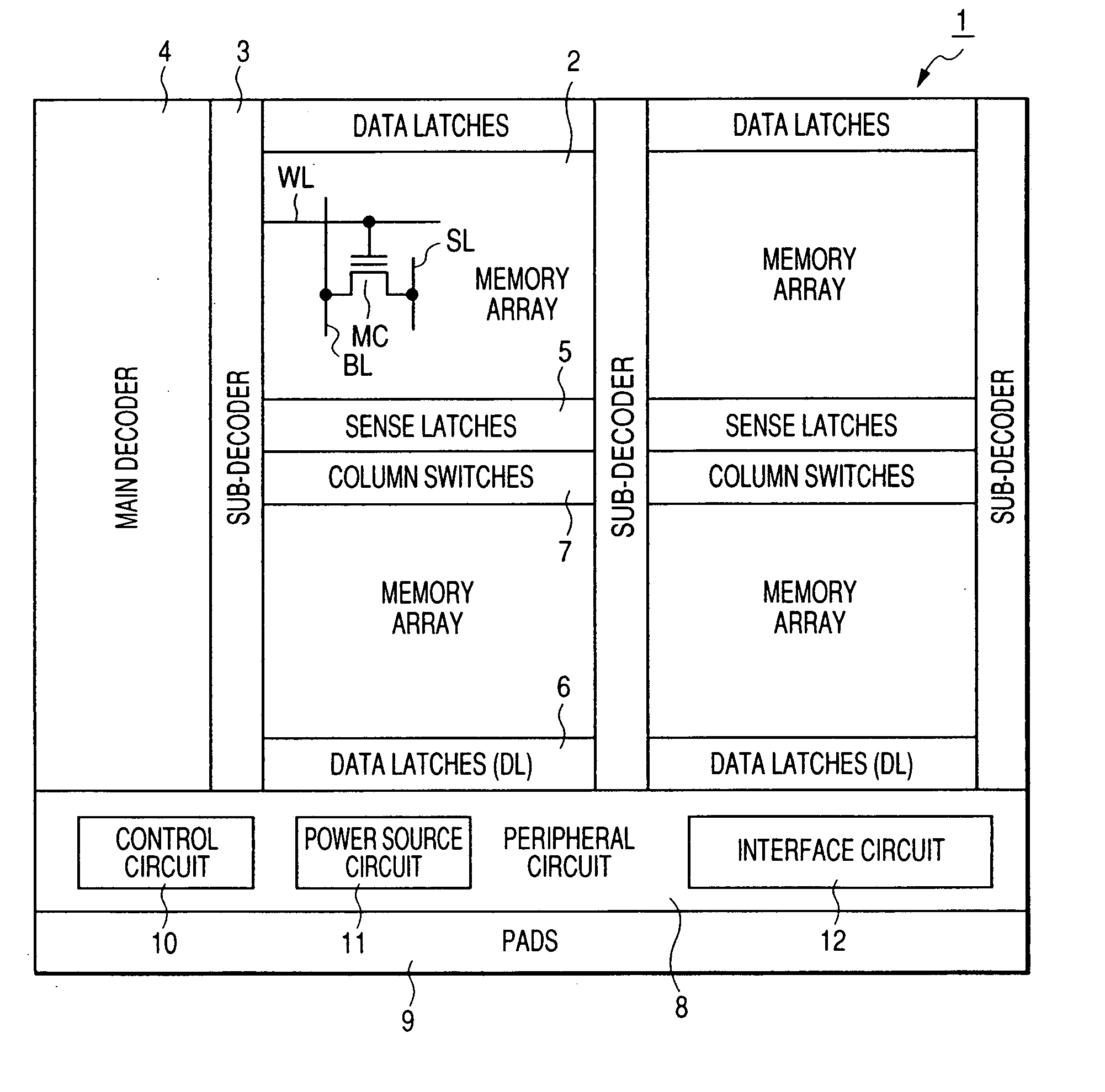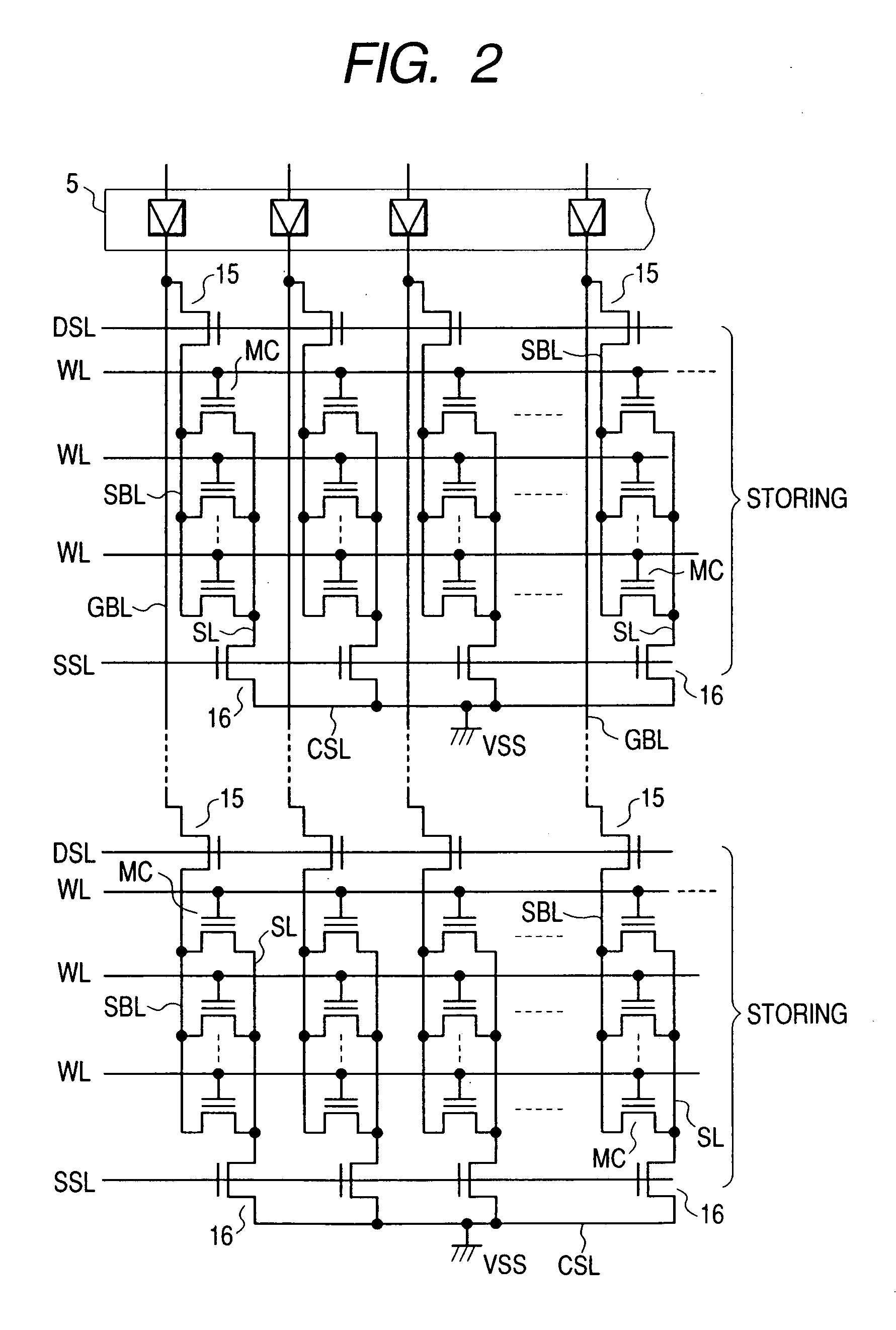Data processing system and nonvolatile memory
a data processing system and non-volatile memory technology, applied in static storage, digital storage, instruments, etc., can solve problems such as depletion of state, and achieve the effect of reducing the number of second loops and reducing the total overhead time resulting from loop switching
- Summary
- Abstract
- Description
- Claims
- Application Information
AI Technical Summary
Benefits of technology
Problems solved by technology
Method used
Image
Examples
Embodiment Construction
[0039]FIG. 1 shows a flash memory 1 according to an example of the present invention. The flash memory 1 is formed on a single semiconductor substrate made of single-crystal silicon or the like and comprises: a memory array 2; a sub-decoder 3; a main decoder 4; sense latches 5; data latches 6; column switches 7; peripheral circuits 8; and pads 9. The peripheral circuits 8 include: a power source circuit 11; a control circuit 10; and an interface circuit 12.
[0040] The foregoing memory array 2 has a large number of nonvolatile memory cells MC each having a threshold voltage which can be changed reversibly by electrical erasing and writing. In the present specification, erasing indicates lowering the threshold voltage of each of the nonvolatile memory cells MC and writing indicates increasing the threshold voltage of the nonvolatile memory cell. The nonvolatile memory cell MC has, e.g., a stacked gate structure having a floating gate and a control gate insulated from each other over a...
PUM
 Login to View More
Login to View More Abstract
Description
Claims
Application Information
 Login to View More
Login to View More - R&D
- Intellectual Property
- Life Sciences
- Materials
- Tech Scout
- Unparalleled Data Quality
- Higher Quality Content
- 60% Fewer Hallucinations
Browse by: Latest US Patents, China's latest patents, Technical Efficacy Thesaurus, Application Domain, Technology Topic, Popular Technical Reports.
© 2025 PatSnap. All rights reserved.Legal|Privacy policy|Modern Slavery Act Transparency Statement|Sitemap|About US| Contact US: help@patsnap.com



